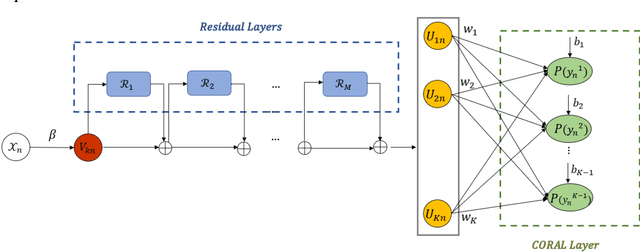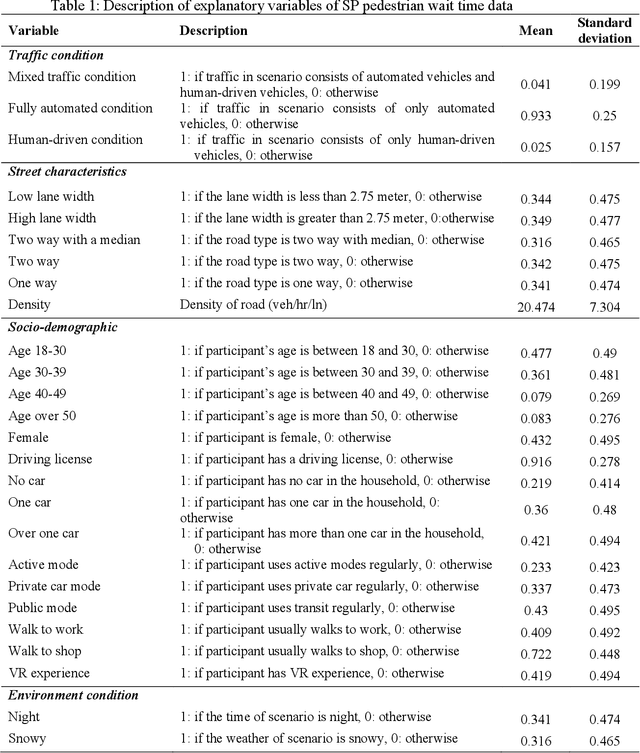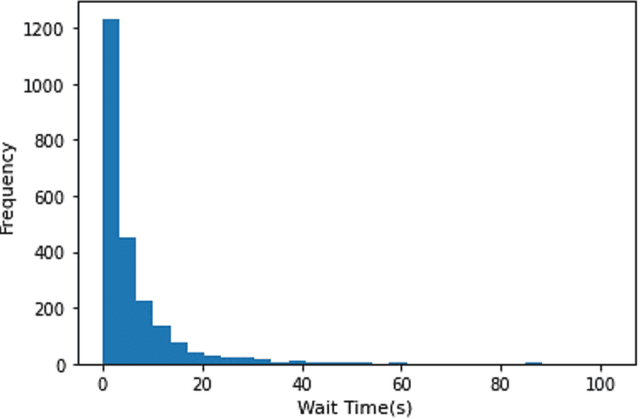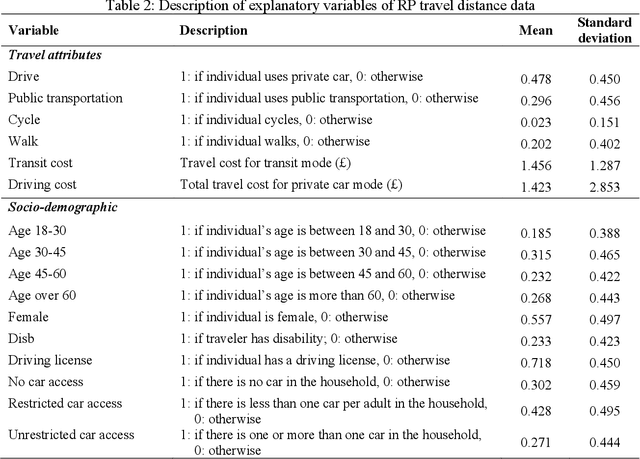Kimia Kamal
A deep causal inference model for fully-interpretable travel behaviour analysis
May 02, 2024Abstract:Transport policy assessment often involves causal questions, yet the causal inference capabilities of traditional travel behavioural models are at best limited. We present the deep CAusal infeRence mOdel for traveL behavIour aNAlysis (CAROLINA), a framework that explicitly models causality in travel behaviour, enhances predictive accuracy, and maintains interpretability by leveraging causal inference, deep learning, and traditional discrete choice modelling. Within this framework, we introduce a Generative Counterfactual model for forecasting human behaviour by adapting the Normalizing Flow method. Through the case studies of virtual reality-based pedestrian crossing behaviour, revealed preference travel behaviour from London, and synthetic data, we demonstrate the effectiveness of our proposed models in uncovering causal relationships, prediction accuracy, and assessing policy interventions. Our results show that intervention mechanisms that can reduce pedestrian stress levels lead to a 38.5% increase in individuals experiencing shorter waiting times. Reducing the travel distances in London results in a 47% increase in sustainable travel modes.
Debiased machine learning for estimating the causal effect of urban traffic on pedestrian crossing behaviour
Dec 21, 2022Abstract:Before the transition of AVs to urban roads and subsequently unprecedented changes in traffic conditions, evaluation of transportation policies and futuristic road design related to pedestrian crossing behavior is of vital importance. Recent studies analyzed the non-causal impact of various variables on pedestrian waiting time in the presence of AVs. However, we mainly investigate the causal effect of traffic density on pedestrian waiting time. We develop a Double/Debiased Machine Learning (DML) model in which the impact of confounders variable influencing both a policy and an outcome of interest is addressed, resulting in unbiased policy evaluation. Furthermore, we try to analyze the effect of traffic density by developing a copula-based joint model of two main components of pedestrian crossing behavior, pedestrian stress level and waiting time. The copula approach has been widely used in the literature, for addressing self-selection problems, which can be classified as a causality analysis in travel behavior modeling. The results obtained from copula approach and DML are compared based on the effect of traffic density. In DML model structure, the standard error term of density parameter is lower than copula approach and the confidence interval is considerably more reliable. In addition, despite the similar sign of effect, the copula approach estimates the effect of traffic density lower than DML, due to the spurious effect of confounders. In short, the DML model structure can flexibly adjust the impact of confounders by using machine learning algorithms and is more reliable for planning future policies.
Ordinal-ResLogit: Interpretable Deep Residual Neural Networks for Ordered Choices
Apr 24, 2022



Abstract:This study presents an Ordinal version of Residual Logit (Ordinal-ResLogit) model to investigate the ordinal responses. We integrate the standard ResLogit model into COnsistent RAnk Logits (CORAL) framework, classified as a binary classification algorithm, to develop a fully interpretable deep learning-based ordinal regression model. As the formulation of the Ordinal-ResLogit model enjoys the Residual Neural Networks concept, our proposed model addresses the main constraint of machine learning algorithms, known as black-box. Moreover, the Ordinal-ResLogit model, as a binary classification framework for ordinal data, guarantees consistency among binary classifiers. We showed that the resulting formulation is able to capture underlying unobserved heterogeneity from the data as well as being an interpretable deep learning-based model. Formulations for market share, substitution patterns, and elasticities are derived. We compare the performance of the Ordinal-ResLogit model with an Ordered Logit Model using a stated preference (SP) dataset on pedestrian wait time and a revealed preference (RP) dataset on travel distance. Our results show that Ordinal-ResLogit outperforms the traditional ordinal regression model for both datasets. Furthermore, the results obtained from the Ordinal-ResLogit RP model show that travel attributes such as driving and transit cost have significant effects on choosing the location of non-mandatory trips. In terms of the Ordinal-ResLogit SP model, our results highlight that the road-related variables and traffic condition are contributing factors in the prediction of pedestrian waiting time such that the mixed traffic condition significantly increases the probability of choosing longer waiting times.
 Add to Chrome
Add to Chrome Add to Firefox
Add to Firefox Add to Edge
Add to Edge